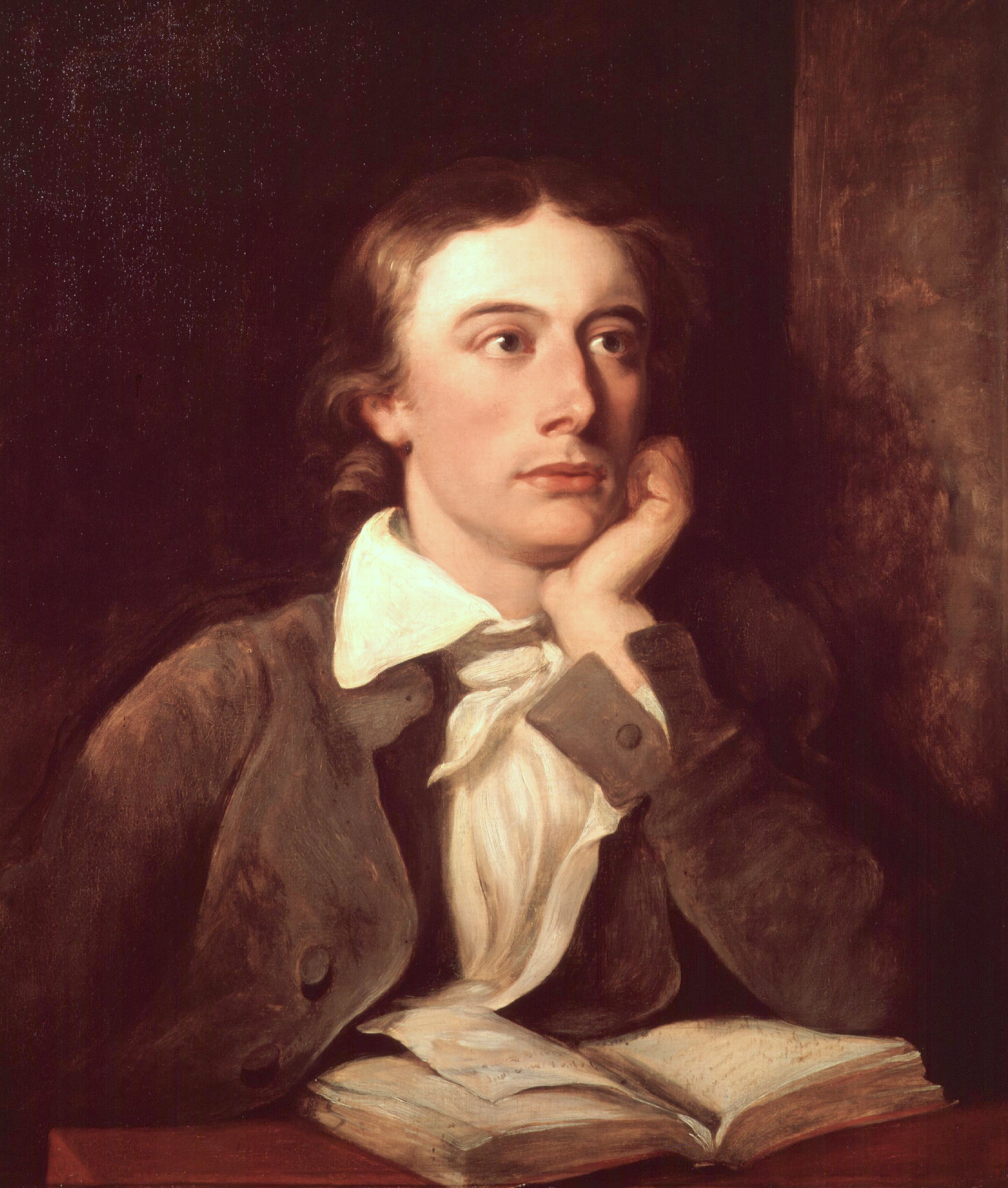da Lettera a Benjamin Bailey, 22 novembre 1817
John Keats frasi celebri
da Lettera a John Taylor, 27 febbraio 1818
da Lettera a George e Georgiana Keats, 18 febbraio 1819
da Lettera a John Hamilton Reynolds, 11 luglio 1819
Frasi sulla bellezza di John Keats
“Una bella cosa è una gioia per sempre: | La sua bellezza aumenta e mai | Sparirà nel nulla.”
cap. I, vv. 906-7
Endymione
da Lettera a James Augustus Hessey, 8 ottobre 1818
da Lettera a John Hamilton Reynolds, 3 febbraio 1818
da Lettera a John Hamilton Reynolds, 9 aprile 1818
Frasi sulla vita di John Keats
da Lettera a Benjamin Robert Haydon, 10-11 maggio 1817
da Lettera a James Rice, 14-16 febbraio 1820
da Lettera a George e Georgiana Keats, 18 febbraio 1819
da Lettera a George e Georgiana Keats, 18 febbraio 1819
da Lettera a Charles Brown, 30 novembre 1820
John Keats Frasi e Citazioni
da Lettera a John Hamilton Reynolds, 25 agosto 1819
da Lettera a Charles Brown, 30 novembre 1820
da Lettera a Benjamin Bailey, 23 gennaio 1818
da Lettera a Benjamin Robert Haydon, 22 dicembre 1818
da Lettera a John Taylor, 23 agosto 1819
da Lettera a Charles Brown, 23 settembre 1819
da Lettera a James Augustus Hessey, 8 ottobre 1818
da Lettera a Richard Woodhouse, 27 ottobre 1818
da Lettera a George e Georgiana Keats, 18 febbraio 1819
da Lettera a Benjamin Bailey, 13 agosto 1819
da Lettera a Fanny Brawne, febbraio 1820
da Lettera a Charles Brown, 28 settembre 1820
da Lettera a Fanny Brawne, 13 ottobre 1819
“La mia immaginazione è un monastero e io sono un monaco.”
da Lettera a Percy Bysshe Shelley, 16 agosto 1820
John Keats: Frasi in inglese
“Thou art a dreaming thing,
A fever of thyself.”
Origine: Bright Star: Love Letters and Poems of John Keats to Fanny Brawne
“My chest of books divide amongst my friends.”
Keats' last poem which doubled as his last will and testament
Bk. IV, l. 173
Endymion (1818)
Origine: The Complete Poems
Contesto: To Sorrow
I bade good-morrow,
And thought to leave her far away behind;
But cheerly, cheerly,
She loves me dearly;
She is so constant to me, and so kind:
I would deceive her
And so leave her,
But ah! she is so constant and so kind.
Letter to John Hamilton Reynolds (February 3, 1818)
Letters (1817–1820)
“Was it a vision, or a waking dream?
Fled is that music: — Do I wake or sleep?”
Stanza 8
Poems (1820), Ode to a Nightingale
To Fanny Brawne (c. February 1820)
Letters (1817–1820)
Contesto: "If I should die," said I to myself, "I have left no immortal work behind me — nothing to make my friends proud of my memory — but I have loved the principle of beauty in all things, and if I had had time I would have made myself remembered."
“I will clamber through the clouds and exist.”
Origine: Letters of John Keats to His Family and Friends
To Fanny Brawne (July 25, 1819)
Letters (1817–1820)
Origine: Bright Star: Love Letters and Poems of John Keats to Fanny Brawne
“Through buried paths, where sleepy twilight dreams
The summer time away.”
Origine: Bright Star: Love Letters and Poems of John Keats to Fanny Brawne
Origine: Bright Star: Love Letters and Poems of John Keats to Fanny Brawne
“Beauty is truth, truth beauty”
Origine: Ode on a Grecian Urn and Other Poems
“Already with thee! tender is the night.”
Stanza 4
Poems (1820), Ode to a Nightingale
“Darkling I listen; and, for many a time
I have been half in love with easeful Death”
Stanza 6
Poems (1820), Ode to a Nightingale
Origine: The Complete Poems
Contesto: Darkling I listen; and, for many a time
I have been half in love with easeful Death,
Call'd him soft names in many a musèd rhyme,
To take into the air my quiet breath;
Now more than ever seems it rich to die,
To cease upon the midnight with no pain,
While thou art pouring forth thy soul abroad
In such an ecstasy!
Still wouldst thou sing, and I have ears in vain —
To thy high requiem become a sod.
